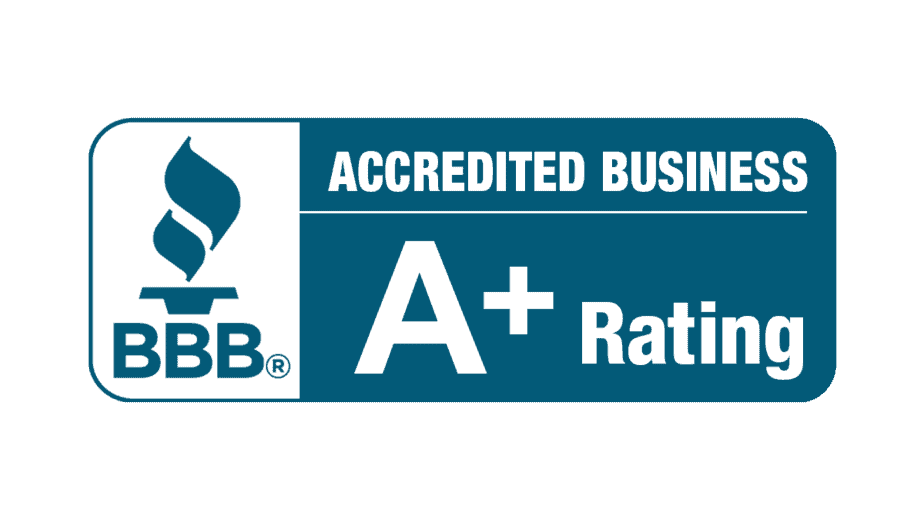Turning your music theory expertise into a side hustle by teaching online can be both rewarding and profitable. Here's how you can get started and succeed in this venture:
- Identify Your Niche and Target Audience: Before you begin, determine which aspects of music theory you want to teach and who your ideal students are. Are you aiming at beginners, advanced students, or a specific age group?
- Create a Curriculum: Develop a structured curriculum that covers essential music theory concepts. Break it down into manageable lessons that build on each other. Incorporate various teaching methods, such as video tutorials, interactive quizzes, and practical exercises.
- Set Up Your Online Platform: Choose a platform to host your lessons. Options include creating your own website, using online course platforms like Teachable or Udemy, or offering live sessions on Zoom or Skype. Ensure your platform is user-friendly and accessible.
- Craft Interactive Lessons: Design your lessons to be engaging and interactive. Use multimedia elements like videos, audio clips, and visual aids to explain complex concepts. Consider incorporating software tools that allow students to practice and receive immediate feedback.
- Manage Schedules and Bookings: Implement a scheduling system that allows students to book lessons at their convenience. Tools like Calendly can help automate this process. Make sure to establish a clear cancellation and rescheduling policy.
- Market Yourself: Build an online presence through social media, a personal website, and educational forums. Share valuable content related to music theory to attract potential students. Testimonials and reviews from your students can also enhance your credibility.
- Offer Free Trials or Workshops: To attract students, consider offering free trial lessons or workshops. This gives potential students a taste of your teaching style and the value you provide.
- Continuously Improve: Gather feedback from your students and use it to refine your lessons. Stay updated with the latest teaching techniques and tools to enhance your instruction.
By following these steps, you can effectively turn your music theory knowledge into a successful online side hustle. This not only allows you to share your passion with a global audience but also provides a flexible and scalable income stream.
Benefits of Online Teaching
When you teach music theory online as a side hustle, you can reach a global student base and increase your earning potential, all while enjoying the flexibility that comes with remote work. This flexibility allows you to offer more lessons at times that are most convenient for your students, leading to higher student engagement and better overall outcomes.
You'll find that lesson flexibility is key to making your online teaching side hustle successful. Students have varying schedules, learning styles, and comfort levels with technology, and teaching online allows you to cater to these individual needs more easily. For instance, you can create video lessons for students to watch on-demand, provide additional support via email or live chat, or schedule extra sessions as needed.
In contrast to in-person lessons, which require you and your students to meet in the same physical location at a set time each week, online lessons let you easily adjust the lesson structure, pace, or length on the fly to meet each student's evolving needs and goals.
The bottom line is, when teaching online as a side hustle, student success directly results from adapting teaching styles and methods, promoting strong relationships, motivation, and communication, and leveraging new technological resources.
Setting Up Your Online Platform
Setting Up Your Online Platform for a Music Theory Side Hustle
To establish a professional online presence for your music theory side hustle, you'll need to choose and set up a reliable platform that integrates tools for lesson delivery, communication, and payment processing.
Platform selection can be overwhelming, but it's essential to evaluate your specific needs as an online music theory teacher. Look for platforms that offer video conferencing, screen sharing, and file transfer capabilities. You'll also want to make certain the platform is user-friendly and accessible for both you and your students.
Once you've chosen your platform, it's time for the technical setup. This involves configuring your audio and video settings, testing your internet connection, and setting up payment processing.
You may also need to familiarize yourself with the platform's built-in tools and features, such as virtual whiteboards, chat boxes, and recording capabilities. Take the time to thoroughly explore the platform's documentation and support resources to guarantee a smooth setup process.
Creating Engaging Lesson Plans
As you create engaging lesson plans for teaching music theory online as a side hustle, it's crucial to consider the importance of structure, interaction, and goal-setting.
Develop a clear lesson plan structure that effectively conveys key music theory concepts, while also incorporating interactive tools to keep students engaged and motivated.
Lesson Plan Structure
Your lesson plan's structure becomes the backbone of an engaging music theory course, which can serve as a profitable side hustle, requiring careful organization to balance instructional content, multimedia elements, and interactive activities.
Start by clearly defining your lesson objectives, outlining what students will learn and achieve by the end of the lesson. This will help guide the rest of your planning and ensure your activities and assessments are aligned with your goals.
Next, reflect on how you'll present the material, breaking down complex music theory concepts into manageable chunks. This might involve creating video lectures, interactive tutorials, or downloadable worksheets—all of which can be monetized through platforms like YouTube or Patreon.
As you plan, think about how you'll assess student understanding, whether through quizzes, assignments, or class discussions. Choosing the right assessment methods will help you gauge student progress and adjust your instruction accordingly, ensuring satisfied students who may recommend your course to others, thereby boosting your side hustle's success.
Interactive Tools Utilization
Effective utilization of interactive tools is essential in creating engaging content for your side hustle, whether it's an online course, blog, or consultation service.
These tools enable you to present complex concepts in a dynamic and immersive way that captures your audience's attention and reinforces their understanding. By incorporating interactive quizzes, you can assess your audience's grasp of key ideas and provide immediate feedback, allowing them to track their progress and adjust their learning strategy.
Virtual workshops offer another interactive platform for your audience to collaborate on projects, share ideas, and learn from one another.
To maximize the effectiveness of interactive tools in your side hustle, ensure seamless integration with your chosen platforms and tailor the tools to your specific objectives. This may involve selecting tools that cater to diverse learning styles, such as visual, auditory, and kinesthetic.
By methodically selecting and incorporating interactive tools into your content, you can create an engaging environment that encourages active participation, reinforces learning, and fosters a deeper understanding of the topics you cover.
This, in turn, will enable your audience to achieve their goals more efficiently, enhancing the value and success of your side hustle.
Student Goal Setting
Setting clear goals for your side hustle helps you stay motivated, focused, and directed throughout the entrepreneurial journey, and empowers you to design strategies tailored to your unique needs and objectives. By involving yourself deeply in the goal-setting process, you're fostering a sense of ownership and commitment, which boosts your motivation and encourages active participation. To facilitate effective goal setting, consider the following framework:
| Goal Component | Description |
|---|---|
| Specificity | Clearly define what you want to achieve with your side hustle |
| Measurability | Quantify the goal to track progress (e.g., revenue, customer acquisition) |
| Achievability | Ensure the goal is realistic and attainable given your resources and constraints |
| Relevance | Align the goal with your interests, skills, and market opportunities |
| Time-bound | Establish a specific deadline for achieving the goal |
Marketing Your Music Theory Services
To attract students and grow a thriving side hustle teaching music theory, crafting a solid marketing strategy that showcases your expertise is essential.
Utilize social media platforms to reach potential students and promote your services. Create a business page on platforms like Facebook, Instagram, and Twitter, and post engaging content that highlights your music theory knowledge. Leverage relevant hashtags to increase visibility and reach a wider audience.
Content marketing is also a powerful tool for establishing your authority in music theory. Develop informative blog posts, videos, or podcasts that provide valuable insights and tips on the subject. Share these on your social media channels and website to attract potential students and demonstrate your expertise.
Building a Student Client Base
As you establish your online music theory teaching side hustle, you'll want to focus on building a loyal student client base.
To do this, you'll need to develop effective online promotion strategies that showcase your expertise and services to potential students.
Effective Online Promotion Strategies
Your online music theory lessons won't attract students on their own – you need to employ effective promotion strategies to build a loyal client base and fill your virtual classroom. A solid online presence is key, and social media platforms are a great place to start. Create profiles on platforms like Facebook, Instagram, and Twitter, and post engaging content that showcases your expertise and teaching style to turn your passion for music into a successful side hustle.
| Platform | Content Type | Frequency |
|---|---|---|
| In-depth lessons, tutorials | 2-3 times a week | |
| Short video clips, tips | 5-7 times a week | |
| Bite-sized theory facts, quotes | 3-5 times a day |
Referrals and Networking
By leveraging social media platforms to establish your expertise and build a solid online presence, you'll lay the groundwork for encouraging referrals and networking opportunities that can help expand your student client base for your online music theory teaching side hustle.
As you deliver high-quality lessons, incentivize your satisfied students to refer friends and family in exchange for discounts or free lessons. Implementing referral programs can be a powerful way to encourage word-of-mouth marketing and attract new students.
To further amplify your reach, attend virtual networking events, conferences, and workshops focused on music education. These events provide a platform to connect with potential students, collaborators, and other music educators who can help spread the word about your services.
Be prepared to effectively communicate your unique value proposition and provide business cards or brochures that highlight your services.
Effective Online Teaching Techniques
When shifting your side hustle of teaching music theory online, you must adapt your methods to accommodate the unique challenges and opportunities presented by the digital environment.
To boost student engagement, incorporate interactive elements such as virtual whiteboards, screen sharing, and live chat. This will enable you to illustrate complex concepts, share resources, and facilitate real-time discussions.
To guarantee students are grasping the material, develop effective feedback techniques. Regularly check in with students through video conferencing, phone calls, or instant messaging to discuss their progress, address questions, and provide constructive criticism.
Utilize digital tools, such as online quizzes and assessments, to track student understanding and identify areas for improvement. By leveraging these strategies, you'll be able to create a supportive and engaging online learning environment that fosters student success.
In doing so, you'll enhance the quality of your music theory lessons and meet the unique needs of your online students, ultimately growing your side hustle into a thriving business.
Managing Schedules and Bookings
Now that you've established effective online teaching techniques, managing your schedule and bookings efficiently becomes paramount in building a thriving music theory teaching side hustle.
To maximize your time and increase productivity, it's crucial to prioritize time management. Start by setting clear boundaries and allocating specific times for lessons, admin tasks, and personal activities. Utilize digital calendars, such as Google Calendar or Apple Calendar, to stay organized and on track.
To streamline your booking process, consider using booking tools like Calendly, ScheduleOnce, or Acuity Scheduling. These tools allow students to schedule lessons with you directly, eliminating the need for back-and-forth emailing or messaging. You can set your availability, lesson durations, and even integrate payment options.
Pricing Your Music Theory Lessons
Determining your pricing structure is a critical step in establishing a profitable online music theory teaching side hustle, as it directly impacts your earnings and the perceived value of your lessons.
Start by evaluating competitive pricing to position yourself favorably in the market. Research what other music theory teachers are charging online to get a sense of the going rate.
Next, think about your target student population and what they're willing to pay. Beginners may be more price-sensitive, while advanced students may be willing to pay more for specialized knowledge. Assess the length and format of your lessons, as well as any additional resources or support you're offering.
Offering lesson package options can help attract students and encourage commitment. Consider discounts for bulk bookings, subscription-based models, or tiered pricing for different levels of service.
By carefully crafting your pricing strategy, you can create a winning formula that attracts students, generates revenue, and helps you grow a thriving online music theory teaching side hustle.
Be prepared to adjust your pricing as needed based on student feedback, market trends, and your own teaching goals.
Growing Your Online Teaching Business
To fuel the growth of your online music theory teaching side hustle, you'll need to develop a multifaceted marketing strategy that showcases your expertise, resonates with your target audience, and drives student enrollment.
This involves identifying your unique selling points, crafting a compelling value proposition, and leveraging social media platforms to reach potential students. You'll also want to prioritize customer retention by delivering exceptional instruction, offering personalized feedback, and fostering a supportive learning community.
As your side hustle expands, you'll need to implement scaling strategies to manage increased demand while maintaining quality standards.
This might involve investing in tools and software that streamline administrative tasks, outsourcing certain functions to freelancers or virtual assistants, or developing strategic partnerships with music schools or organizations.
Conclusion
You've successfully turned your passion for music theory into a thriving online side hustle. By leveraging interactive tools and tailored lesson plans, you've built a loyal client base.
For instance, Emily, a music enthusiast from Australia, was struggling to grasp chord progressions. Through your online lessons, she gained confidence and started composing her own songs.
With a solid foundation in place, you're now poised to expand your services, increase your earnings, and inspire more students worldwide.
Additionally, consider offering specialized workshops, creating downloadable resources, and collaborating with other music educators to further enhance your side hustle and reach an even broader audience.

















































0
View comments